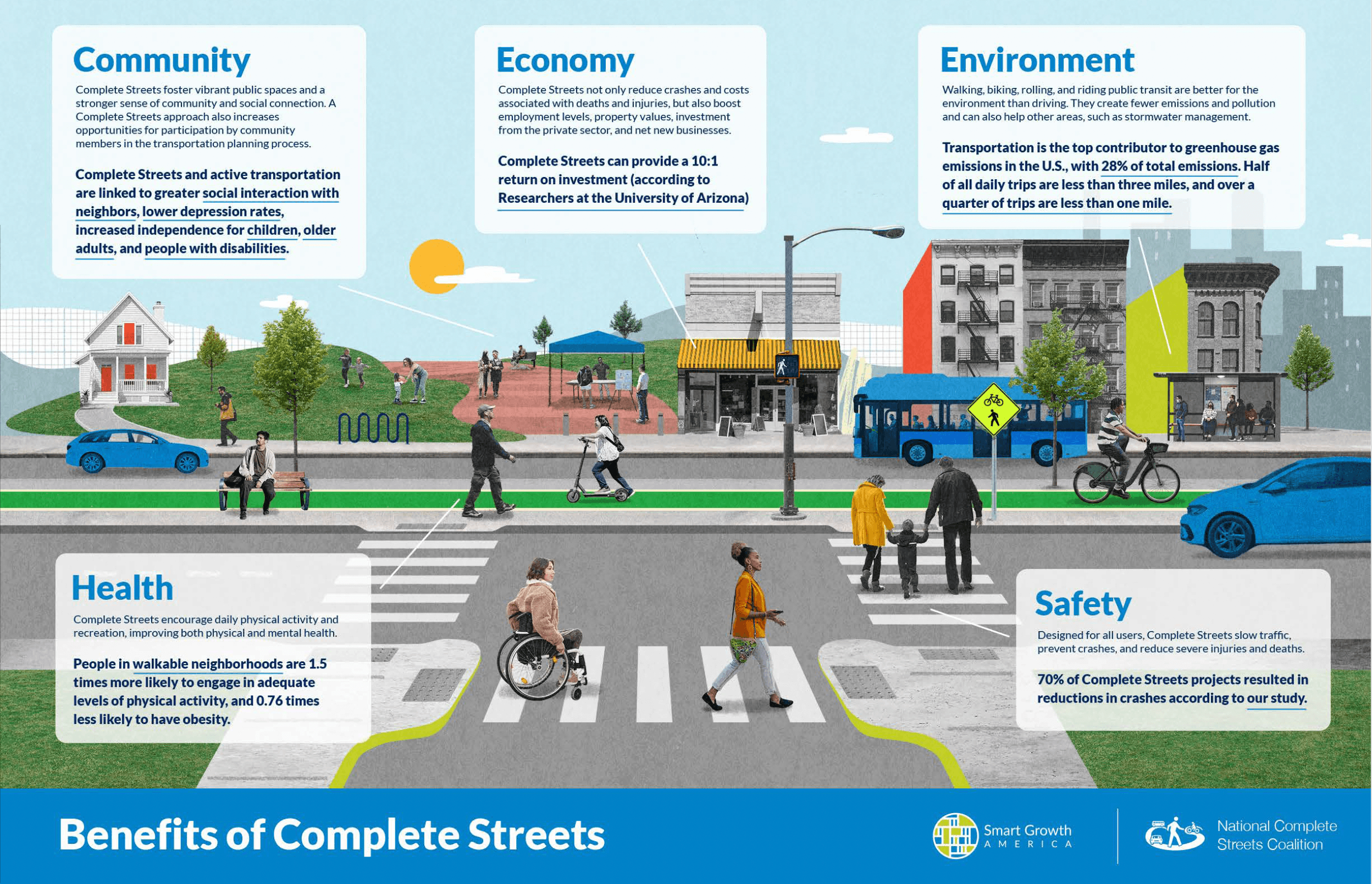
Signature reports
The Best Complete Streets Policies 2025
Over the past two decades, communities across the U.S. have increasingly embraced the Complete Streets approach. The 2025 Best Complete Streets Policies report evaluates and ranks the 43 policies adopted in 2023 and 2024, highlighting what sets the top performers apart.
Overview
Twenty years ago, a group of transportation professionals gave a new name to the approach of designing, building, and maintaining streets to meet the needs of all users–Complete Streets. Since then, over 1,700 Complete Streets policies have been adopted across the United States for communities to develop new transportation solutions that meet the needs of all users, including people walking, cycling, taking transit, and driving.
The Complete Streets approach involves practical and tangible changes—such as putting sidewalks under people’s feet, adding raised crosswalks, and building safe bicycle infrastructure. It also requires less visible changes like a public accountability system for implementation, evaluation processes, and more. Beyond these, though, adopting a Complete Streets approach is an acknowledgment that the old way of doing things wasn’t working and that communities deserve so much more.
With pedestrian fatalities at near-record levels, Complete Streets policies are critical. Our streets are unsafe and create a number of hazards for all road users. Vulnerable roadway users such as people walking, cycling, and people with disabilities are at particular risk.
The Best Complete Streets Policies
This report presents new Complete Streets policies that have been adopted between 2023 and 2024 and scores them based on the 10 Elements of a Complete Streets Policy (found here in PDF form and featured at the bottom of the page). The report highlights the policies with the highest scores and analyzes general trends and observational data from SGA’s policy review.

Top 10 Complete Streets Policies (2023-2024)
The benefits of Complete Streets

A “strong” Complete Streets policy is one that addresses a substantial number of the elements in our policy framework and sets the jurisdiction up for important improvements to its transportation system. The National Complete Streets Coalition recognizes multiple types of documents in our definition of a Complete Streets policy, including legislation, resolutions, executive orders, and internal policies.

© 2025 Smart Growth America. All rights reserved
Site By3Lane Marketing







